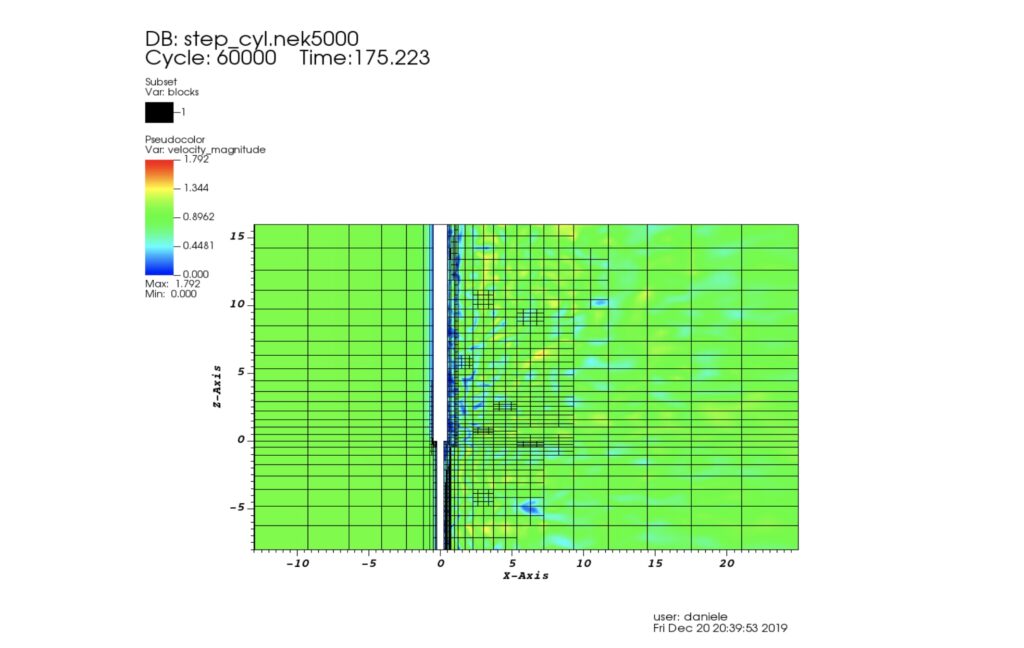AMR for Nek5000

When we study turbulent chaotic flows in complicated geometries our experience could not be sufficient to suggest where a more refined mesh is required. A priori knowledge of flow physics is mostly unknown, hence the development of an adaptive mesh is crucial for large-scale computational problems. The implementation of adaptive mesh refinement (AMR) technique in the CFD open-source code Nek5000 enables to push forward the limit in terms of problem size and complexity. The design of a non-conformal mesh can be summarized into two main steps: the evaluation of the error committed in each element and the mesh refinement strategy. In our framework, we have implemented the spectral error indicator, cheap and based on local measure of the error, and the dual weighted adjoint error estimator, more expensive and oriented to properly evaluate a specific physical quantity, e.g. drag or lift. Once mapped the elements required to be refined, the new mesh is built by splitting such elements, according to the p-refinement approach. A series of publications is ongoing, with one published in 2019 (see below).
The attached figure shows the new meshing capabilities in a fully 3D case, the so-called stepped cylinder. This case is an important problem for instance for offshore wind turbines, which are typically distributed on pillars in the water, exposed to currents. The structural integrity is of course paramount, and only simulations can help to design the necessary strength requirements.




